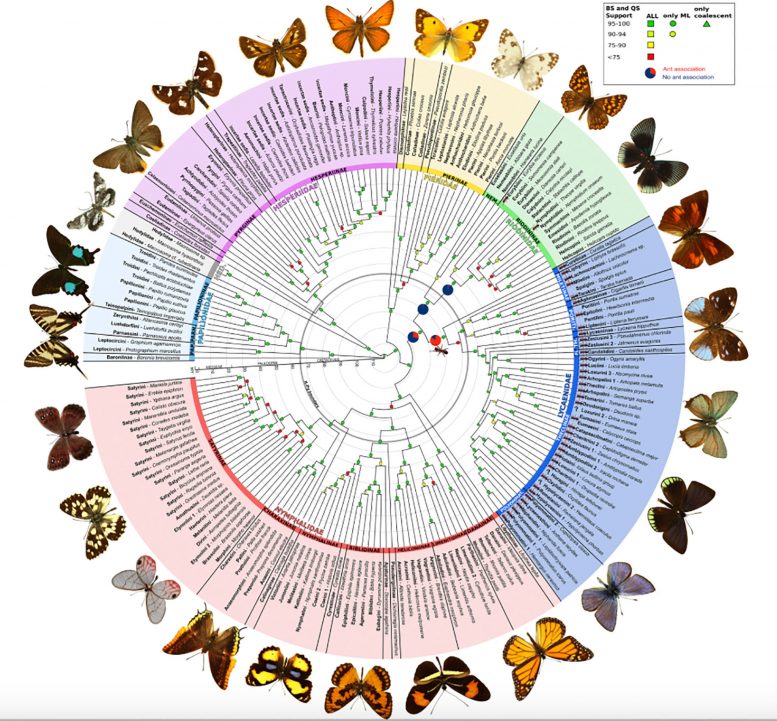
The evolutionary tree produced by Marianne Espeland, Akito Kawahara and their collaborators provides a much-needed backbone for a revised classification of butterflies. Figure by Espeland et al. in Current Biology
For hundreds of years, butterfly collecting has often inspired a special kind of fanaticism, spurring lengthy expeditions, sparking rivalries, and prompting some collectors to risk their fortunes and skins in their quest for the next elusive specimen.
The result is a treasure trove of scientific information stored in the form of millions of butterfly specimens, offering insights into community ecology, how species originate and evolve, climate change, and interactions between plants and insects.
But a comprehensive map of how butterflies are related to each other has been lacking – until now.
Lepidopterists Akito Kawahara and Marianne Espeland led a team effort to produce a bigger, better butterfly evolutionary tree with a 35-fold increase in genetic data and three times as many taxa – classification units of organisms – as previous studies. They then calibrated the tree based on the fossil record, assigning dates to certain developmental milestones.
“We still have a long way to go, but this is the first comprehensive map of butterfly evolution,” said Kawahara, associate professor, and curator at the Florida Museum of Natural History’s McGuire Center for Lepidoptera and Biodiversity on the University of Florida campus. “Lots of previous studies cover butterfly evolution on smaller scales – by locality or taxon – but surprisingly few have reached across the breadth of butterfly diversity.”
The study was published today in Current Biology.
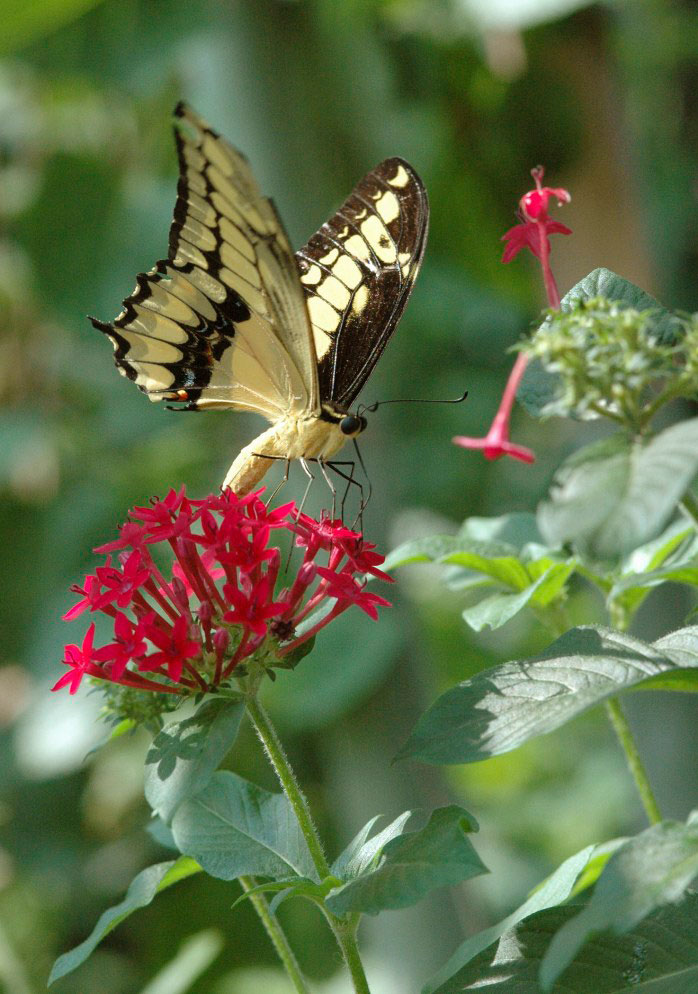
The study confirms previous research that suggested swallowtails, such as this Papilio thoas, are a sister family to all other butterflies. Florida Museum photo by Jeff Gage
Shake-ups and surprises
The team analyzed a dataset of 352 genetic markers from 207 butterfly species representing 98 percent of tribes, which are a rank above genus but below family and subfamily. Their findings paint a detailed picture of relationships between butterflies and point to some name changes.
The data confirm that swallowtails are a sister group to all other butterflies, meaning they were the first family on the butterfly family tree to branch off. But while previous literature groups swallowtails, birdwings, zebra swallowtails, and swordtails together, this study shows they do not share a common ancestor, a finding supported by the fact that these butterflies feed on different host plants.
“That tells us that butterflies and plants may have evolved together,” Kawahara said.
A finding that surprised Espeland, the study’s lead author, is that the blues are nested within the hairstreaks.
“Both of these groups have remained quite stable through time, but our study shows that a substantial rearrangement of the classification is necessary,” said Espeland, who started the project as a postdoctoral researcher at the Florida Museum and is now curator and head of the Lepidoptera section at the Zoological Research Museum Alexander Koenig in Germany.
Most blues and hairstreaks and some metalmarks have mutually beneficial relationships with ants: Butterfly larvae provide sugary nectar in exchange for the ants’ protection from predators. The researchers found this association evolved once in blues and hairstreaks and twice in metalmarks.
Previous studies suggest the first butterflies date back more than 100 million years, a date this study supports. But most of the lineages that exist today originated after the mass extinction event that killed off non-avian dinosaurs about 65 million years ago.
“It is actually quite nice that the ages inferred in this study are relatively similar to those found in previous studies since this means that we are gradually converging towards a consensus, which should be close to the correct ages,” Espeland said.
One curious finding, Kawahara said, is that the phylogeny suggests butterfly-moths – the only butterflies known to be nocturnal – developed hearing organs before bats, their primary predator, appeared.
“I’m fascinated by the timing of when these hearing organs developed and why,” Kawahara said. “There’s a lot of mystery and uncertainty here.”
He pointed to the value of the McGuire Center, home to one of the world’s largest collections of butterflies and moths, in providing the data necessary – especially from rare specimens – for the study.
“The collections at the McGuire Center made this possible,” he said. “There are probably only a few other research institutions in the world that would be able to carry this project.”
Childhood dream
Like many butterfly enthusiasts, Kawahara developed the obsession early. By age 5, he had a tiny collection and could differentiate various groups of butterflies. He used his mother’s Xerox machine to photocopy a simple butterfly phylogeny to help him identify specimens, posting it to the wall of his bedroom.
“It was a really boring-looking picture, gray with lines on it,” he said. “I didn’t know anything about evolutionary trees, but I was mystified by the unknown. A lot of the lines were dashed – there were clearly discoveries to be made. I remember looking at it and just thinking, ‘It would be really amazing to be able to study this one day.’ ”
An even bigger tree
The researchers have set their sights on an even more comprehensive phylogeny, one that accounts for every described butterfly species. Generating this tree is the main goal of the U.S. National Science Foundation-funded ButterflyNet project, which will organize all butterflies based on how they are related to one another. For each species, the project will include associated data such as its geographical distribution, host plants, and life history traits.
“This tree represents 207 species out of some 18,800,” Kawahara said. “So, it’s a tiny, tiny fraction. But it’s the first step.”
Reference: “A Comprehensive and Dated Phylogenomic Analysis of Butterflies” by Marianne Espeland, Jesse Breinholt, Keith R. Willmott, Andrew D. Warren, Roger Vila, Emmanuel F.A. Toussaint, Sarah C. Maunsell, Kwaku Aduse-Poku, Gerard Talavera, Rod Eastwood, Marta A. Jarzyna, Robert Guralnick, David J. Lohman, Naomi E. Pierce
and Akito Y. Kawahara, 15 February 2018, Current Biology.
DOI: 10.1016/j.cub.2018.01.061


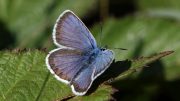
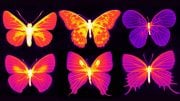
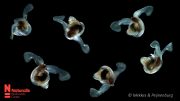
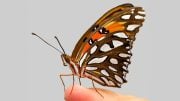
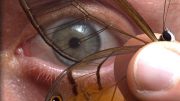
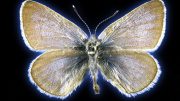
Be the first to comment on "New Comprehensive Map of How Butterflies Are Related to Each Other"